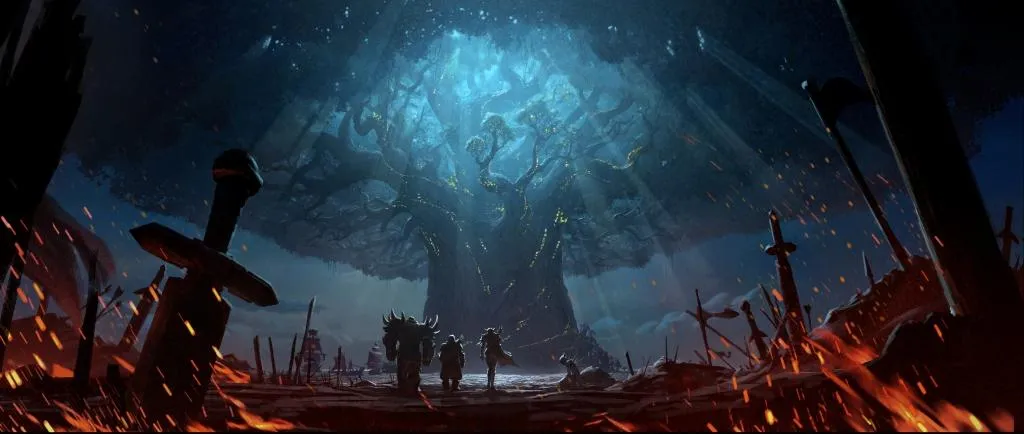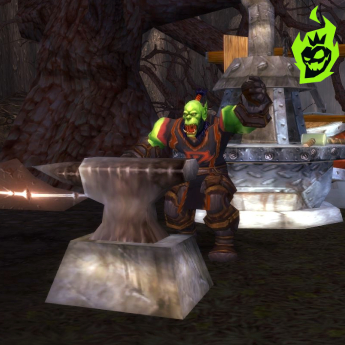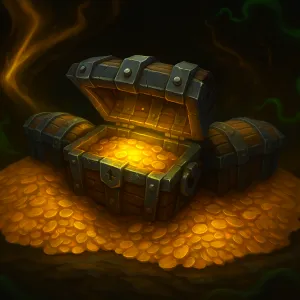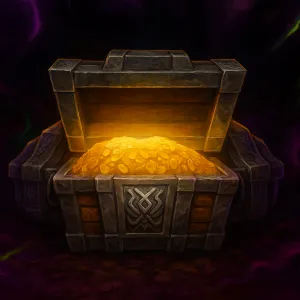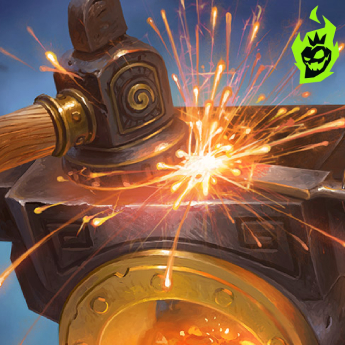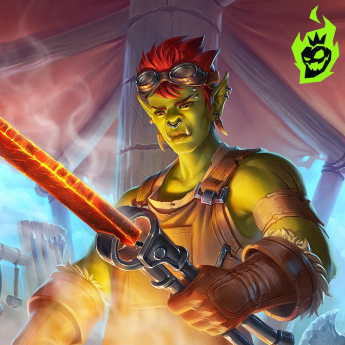WoW Classic Blacksmithing Guide

Forging heavy plate armor and hammering out lethal weapons has always been a core part of fantasy adventures. In WoW Classic, Blacksmithing gives you that: the chance to craft gear, rods and epic items that stand out among all professions. My personal journey with this profession involved raw materials, quest lines and plenty of smithing at the anvil. Here I will share everything I learned in a practical way, with tips and explanations for every type of player. Check out each section for a deeper look at leveling, specialized paths and gold making.
Getting Started with Blacksmithing in WoW Classic
It’s always fun to strike the first copper bars and shape them into something useful. Starting Blacksmithing in WoW Classic is about understanding trainers, gathering ore and preparing for the investment of time and gold. Blacksmithing is often paired with Mining for a constant flow of materials, although some adventurers choose other gathering professions and buy ingredients through the Auction House (AH). There’s a sense of real progression in making better items and that’s what draws many players to this profession in the first place.
Those that decide to start Blacksmithing will find the apprenticeship stage early on in major cities like Stormwind or Orgrimmar. Journeyman training opens up quickly as well in the same areas, while Expert training is available in more specialized trainers in places like Ironforge for Alliance and Orgrimmar for Horde. The final stage, Artisan training is only available from Bengus Deepforge in Ironforge (Alliance) or Okothos Ironrager in Orgrimmar (Horde) and Breck Rockbrow in Stranglethorn Vale. Check various WoW resources for the exact NPC coordinates. Once you finished the initial path, gather plenty of ore and stones for the journey ahead.
Here is a table with the early Blacksmithing trainers and materials needed at lower skill levels. It’s a quick summary of where to go and what to make during these stages:
| Blacksmithing Stage | Trainer Location | Common Materials Needed |
|---|---|---|
| Apprentice (1–75) | Major Cities (Stormwind, Orgrimmar) | Copper Ore/Bars, Rough Stones |
| Journeyman (75–150) | Major Cities (Stormwind, Orgrimmar, Ironforge) | Tin Ore/Bars, Bronze Bars, Coarse Stones |
| Expert (150–225) | Ironforge (Alliance), Orgrimmar (Horde) | Iron Bars, Heavy Stones, Steel Bars |
| Artisan (225–300) | Breck Rockbrow in BB, Bengus, Okothos, etc. | Mithril Bars, Thorium Bars, Solid Stones |
Starting Blacksmithing in WoW Classic requires planning. A stable supply of ore and stones makes progress much smoother. Those that decide to gather these materials themselves will spend less overall, but those with spare gold can buy the materials from the AH. Either way you’ll end up forging gear while leveling up.
Why Blacksmithing Is Worth Exploring
Understanding why Blacksmithing is worth it sometimes helps you decide if it fits your goals. There are many reasons why Blacksmithing is appealing to different types of players looking for variety in crafting. Blacksmithing provides gear for plate and mail wearers, rods for Enchanters and Twink items for players in lower level battlegrounds. Here’s a short list of the highlights that justify Blacksmithing:
- Exclusive Armor and Weapons: Items with unique stats or resistances, good for raids and dungeons.
- High Demand for Crafted Rods: Enchanters need rods at every stage and the rods are only made by Blacksmiths.
- Twink and Leveling Gear: Lower level gear that appeals to those capped to battle in lower brackets or just leveling.
- Profit: Rare patterns, endgame gear and selling crafting services in trade chat.
Why Blacksmithing is worth it becomes more clear once you see how the profession can shape your character progression, help your guildmates and make items for high level PvE or PvP. There’s a sense of pride in forging wanted items and sometimes controlling the AH.
Specializations and Quests
Choosing a specialization is a big decision for many blacksmiths. Specializations and Quests are about deciding between Weapon Smithing or Armor Smithing around skill level 200. This choice will determine the items learned and forged throughout the endgame. Depending on your preference each specialization has its own questline, requirements and final patterns.
Mastering both sides takes dedication but an adventurer will usually stick to one path in WoW Classic. Consider the crafts and the gear’s demand. Below is an overview of these specializations, plus the unique items forged through each route:
| Specialization | Quests Needed | Notable Items | Extra Perks |
|---|---|---|---|
| Weapon Smithing | Craft specific weapons for the quest NPC | Arcanite Reaper, Nightfall | Further specialization: Swordsmith, Axesmith, or Hammersmith |
| Armor Smithing | More complex quest chains | Ornate Mithril armor, Icebane | Mastery in plate pieces with various defensive or resist bonuses |
Specializations and Quests requires plenty of bars, gems and sometimes extra quest items. It’s best to gather these in advance. Completing the questline quickly opens up specialized crafting that leads to high end raid and twink gear.
Weapon Smithing: Swordsmith, Axesmith, and Hammersmith
Weapon Smithing: Swordsmith, Axesmith, and Hammersmith shows a trio of paths. Once the main Weapon Smithing path is unlocked, an artisan blacksmith can focus on one type of weapon. Each path has exclusive recipes that contribute to best in slot gear or at least a stepping stone to it. Swordsmith gives balanced blades, Axesmith high damage cleavers, Hammersmith blunt weapons. Below is a table of example crafts and some stats for each branch:
| Branch | Example Craft | Stat Focus / Appeal |
|---|---|---|
| Swordsmith | Volcanic Hammer | Balanced DPS for certain classes |
| Axesmith | Arcanite Reaper | High burst damage, popular for PvP |
| Hammersmith | Masterwork Stormhammer | Stuns or utility benefits for some playstyles |
Choosing a weapon specialization requires completing various quests and forging specific items, like multiple Mithril Axes or Big Black Maces. Weapon Smithing: Swordsmith, Axesmith, and Hammersmith turns a blacksmith into a specialist that others will look for when they need that perfect pre-raid or twink weapon. It also defines the blacksmith in trade chat when offering crafting services to other players for rare or high end gear.
Armor Smithing Requirements
Armor Smithing Requirements seem more daunting, especially since the questlines have long chains. They involve forging Ornate Mithril items, turning in multiple bars and gems and sometimes traveling to Stranglethorn Vale or even remote corners of Kalimdor. The armor pieces crafted from Armor Smithing are known for their defensive stats and raid-tier protective gear. Below is a quick list of what you need to do for Armor Smithing:
- Gather or buy the recipes for Ornate Mithril gear through quest chains.
- Forge multiple items like Ornate Mithril Boots or Ornate Mithril Helms.
- Turn in Iron Bars, Mithril Bars and gemstones for sub-quests.
Armor Smithing requirements pay off in the long run since some of the top tier plate items and resistance sets come from these specialized patterns.
Recipes, Crafting, and Progression
Digging deeper into Recipes, Crafting and Progression shows you all the patterns you can find in Azeroth. By collecting vendor recipes, quest rewards, world drops and reputation based formulas, a blacksmith crafts both personal gear and items for others. Leveling from 1 to 300 involves forging hundreds of bars into better and better equipment. Along the way some recipes stand out because of synergy with Twinks, endgame raiders or role-players looking for unique looks.
Getting recipes sometimes requires exploring dungeons, forming groups to kill specific bosses or building faction with groups like the Thorium Brotherhood. Once you have the recipes it’s best to plan out your forging sessions to push your skill up and get valuable items. Below is a list of notable recipes, where they come from and why they are valuable:
| Recipe | Source | Approx. Skill Req | Reason for Value |
|---|---|---|---|
| Pearl-Handled Dagger | Vendor (limited supply) | ~100 | Popular Twink dagger for BG brackets |
| Golden Rod | Trainer / Vendor | ~150 | Needed by Enchanters, also for some quest lines |
| Arcanite Reaper | Rare drop / AH | ~300 | Known for heavy DPS, beloved by Warriors |
| Lionheart Helm | Endgame pattern (Molten Core, etc.) | ~300 | Major pre-raid helm for plate DPS |
Recipes, Crafting and Progression is the heart of Blacksmithing. Completing each forging milestone feels great, especially when that item sees action in raids like Blackwing Lair or Onyxia’s Lair. Gathering the right recipes and leveling the profession pays off for those who invest the time and resources.
Leveling from 1 to 300
A simple way to Leveling from 1 to 300 is the goal for most blacksmiths. The early stages revolve around copper, tin and bronze, the mid-range around iron, steel and mithril. By skill 200 specialized questlines appear and then heavy mithril and thorium based crafts all the way to 300. Below is a table of the general materials used and approximate skill ranges to consider along the way:
| Skill Range | Materials Focused On | Typical Items Forged |
|---|---|---|
| 1 – 75 | Copper Bars, Rough Stones | Copper Bracers, Copper Chain Belts |
| 75 – 150 | Bronze Bars, Coarse Stones, Silver Bars | Bronze Leggings, Silver Skeleton Key |
| 150 – 200 | Iron Bars, Heavy Stones, Steel Bars (Iron + Coal) | Iron Plate Helm, Steel Weapons |
| 200 – 250 | Mithril Bars, Solid Stones, some Truesilver | Mithril Coifs, Ornate Mithril gear |
| 250 – 300 | Thorium Bars, Dense Stones, Arcanite (Thorium + Arcane Crystal) | Thorium Bracers, Imperial Plate gear, various epic crafts |
Leveling from 1 to 300 requires consistent forging, visiting the trainer for skill upgrades and gathering or trading for the right materials. By structuring your forging sessions around this progression it feels more organized and rewarding to master Blacksmithing.
Notable Items for Twinking and Leveling
Some items exist only to serve twinkers and levelers. Twinking and Leveling Items sell well on the AH. These crafts give blacksmiths a steady income and a reason to go back to older recipes. The supply of some bars might drop or fluctuate in price, offering interesting market opportunities. Below is a short list:
- Pearl-Handled Dagger (Requires ~100 Blacksmithing): Twink item for level 19.
- Golden Rod: For Enchanters and some quest lines, mid-level range.
- Silvered Bronze Gear: Bracers and shoulders for leveling or lower-level PvP.
- Heavy Mithril Gauntlet: 40s for plate-wearers or mail-users transitioning.
Twinking and Leveling Items keep blacksmiths busy, twinks love their best-in-slot gear and levelers their cheap upgrades. It’s a nice niche to get into if you want extra gold.
Making Gold with Blacksmithing
One of the best parts of the profession is the gold making. Making Gold with Blacksmithing is a steady mix of forging rods for Enchanters, leveling gear and offering high-end items. Trade chat is a stage for blacksmiths to advertise their gear crafts, especially if they have rare recipes. A blacksmith who focuses on offering specialized items stands out in the community and can charge more.
Building up a collection of unique patterns often requires consistent raiding, questing or actively farming world drops. Below is how blacksmiths can generate gold and get a foothold in the WoW Classic economy:
| Gold-Generating Method | Description | Example Items/Services |
|---|---|---|
| High-Level Gear Crafting | Offer specialized items or raid-level crafts | Lionheart Helm, Titanic Leggings, Nightfall |
| Selling Rare World Drop Crafts | Farm or purchase epic recipe drops and craft items | Arcanite Reaper, Sulfuron Hammer |
| Profession Collaboration | Forge rods that Enchanters require | Golden Rod, Truesilver Rod, Arcanite Rod |
| Twink and Leveling Items | Capitalize on lower-level BG brackets or quest upgrades | Pearl-Handled Dagger, Silvered Bronze items |
Making Gold with Blacksmithing takes time but pays off when players are after top-tier items or rods. Being in trade chat and forging relationships with guilds or dedicated crafters often brings consistent business, especially during the peak progression phases of a server.
High-Level Craftables and Rare Patterns
The epitome of Blacksmithing is High-End Craftables and Rare Patterns. Items like Lionheart Helm, Nightfall and Sulfuron Hammer are legendary in Molten Core and Blackwing Lair. Gathering the recipes requires reputation grinding, killing the same boss multiple times or investing gold in the recipes. But once you have the patterns, top raiders will come to you for gear upgrades. Below is a table of some high-end recipes, their source and why they’re so popular:
| Craftable | Source | Utility in Raids/PvP |
|---|---|---|
| Lionheart Helm | Drop from high-level raid environments | Major DPS boost for Warriors |
| Titanic Leggings | Rare pattern from high-level content | Exceptional Strength and Stamina |
| Nightfall | World drop or raid content pattern | Debuff on target, favored in raids |
| Sulfuron Hammer | Crafted with a recipe from Majordomo questline | Transforms into Sulfuras, popular among collectors |
High-End Craftables and Rare Patterns are the badge of honor for a blacksmith on a server. Players looking for pre-raid BiS or in raid progression look for these items. The material cost to craft can be high but seeing fully geared players wielding an Arcanite Reaper or wearing a Lionheart Helm is worth it.
Profession Collaboration and Rod Crafting
A big part of the WoW Classic economy is profession synergy. Profession Collaboration and Rod Crafting revolves around Enchanting where rods at each tier are needed for enchants. Blacksmiths are in a unique position to craft rods from copper to arcanite. This is a steady income since every enchanter, whether leveling or endgame, will need them.
Below are the rods blacksmiths provide:
- Copper Rod: The first enchanting rod, needed at skill level 1 in Enchanting.
- Golden Rod: For mid-level enchanting, also used in some quest objectives.
- Truesilver Rod: For enchanters around skill level 200.
- Arcanite Rod: The ultimate rod for high-level enchants, requires Arcanite Bar.
Profession Collaboration and Rod Crafting not only gives you income but also a relationship with enchanters or guildmates who need these components. Setting a fair crafting fee or providing rods in bulk makes a blacksmith relevant in every major city trade chat.
Final Thoughts
Blacksmithing has always been for those who like to forge powerful gear and shape the market around them. The profession gives you a sense of identity, from forging copper bracers to legendary epic weapons that can turn the tide in raids. Specializations like Weapon Smithing or Armor Smithing add layers to the game, while high-end crafts like Lionheart Helm or Arcanite Reaper are status symbols for those who wield them.
Whether it’s forging rods for enchanters, crafting twink items or offering top-tier armor for raid progress, Blacksmithing is an investment of time and resources with long term pay off. It gives you personal power and profit through unique recipes, specialized questlines and profession synergy. Go try out new patterns, experiment with your forging style and find your place among Azeroth’s crafters. The anvil awaits.
